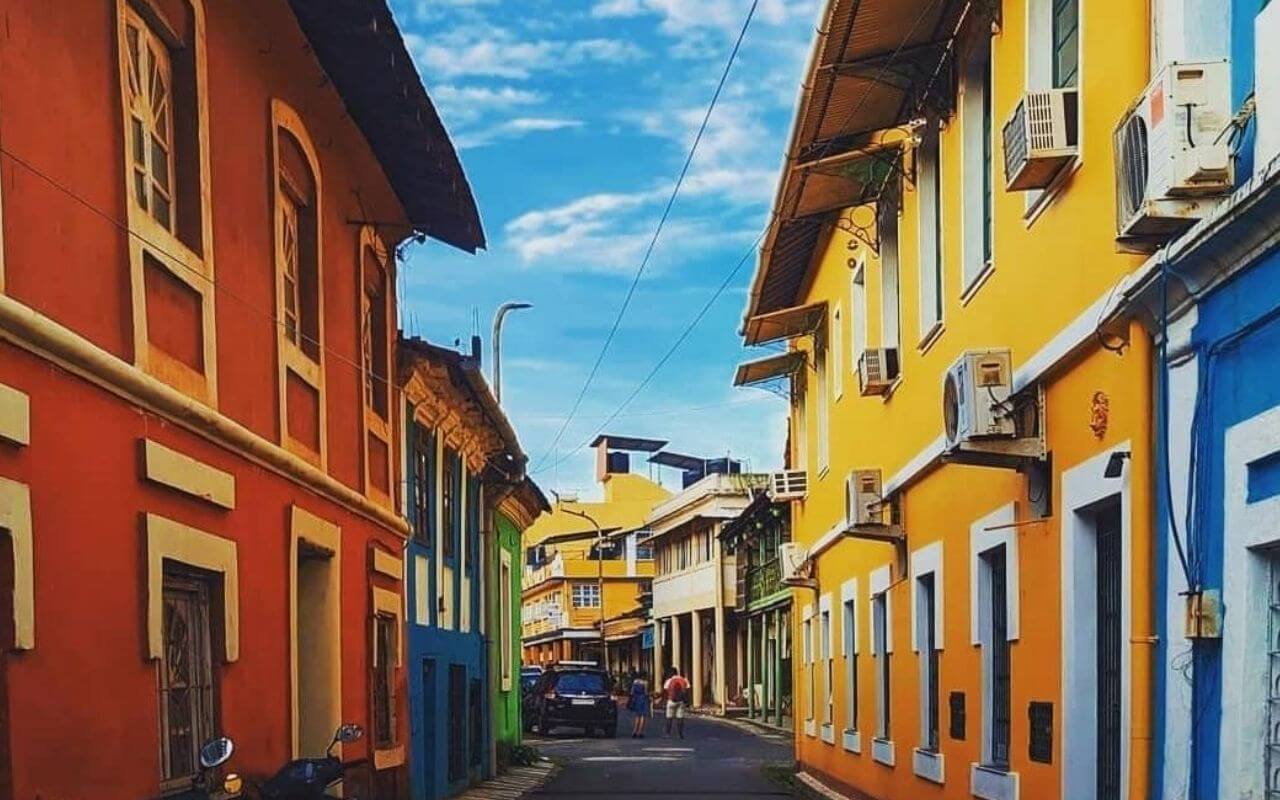Share This Article
Introduction
Welcome to Goa, a cultural junction of vibrance, stunning beaches and rich architectural heritage. With colonial influences shaping the landscape, Goan architecture blends Indian and Portuguese influences. Let?s dive into how this took shape and what are the lesser-known, hidden architectural treasures in India?s Pearl of the Orient.

Architectural Style of Goa
Though tempting to call it Portuguese architecture, Goan architecture is primarily Indian. The labour, materials and building techniques were all native. Some notable features that make Goan architecture unique are:
Vibrant Colours
Only churches and chapels sported white. The people did not shy away from using colour, resulting in a very visually stimulating landscape.

Verandas
The houses had a long veranda bordering it to welcome visitors. It served the purpose of an outdoor living space and was an integral part of Goan culture.

Columns and Railings
The verandas were bordered with fluted or decorative columns connected by intricate railings.

Ornate Windows
Decorative windows were a staple of Goan architecture. These wooden windows were often decorated with oyster shells to elevate their appearance, making for interesting light patterns shining through them.

Red-tiled Roofs
Mangalore tiles were used extensively in Goa for their durability and are now a characteristic feature of Goan homes.
Hidden Architectural Gems of Goa
While Goa is celebrated for its iconic churches and colonial mansions, there exist several underrated gems that haven?t quite caught the storm they should have. These lesser-known historic buildings Goa has to offer shed light on its past through varied experiences. It?s necessary to preserve these unexplored wonders to prevent the stories of our past from fading into obscurity.
Unexplored Architectural Wonders in Goa
Chapel of St. Catherine, Old Goa

While thousands flood to the Church of St Francis of Assisi, there is a small chapel a minute?s walk away within the same compound. The Chapel of St. Catherine of Alexandria was built by Portuguese conqueror Afonso de Albuquerque to commemorate his entry into the city on St Catherine?s Day, 1510.
The laterite chapel plastered with lime mortar houses a beautiful altar surrounded by paintings and artworks. No one would suspect that a Chapel with such minimal exteriors would house something so incredibly ornate.

This UNESCO World Heritage Site faces the Mandovi River and is protected by the Archeological Survey of India.
Menezes Braganza Pereira House, Chandor
Located at one end of Chandor?s village square, the Menezes Braganza House is the biggest Portuguese mansion in Goa. The house was built in the 17th century by the Braganza family on land granted by the King of Portugal and is now divided into an east and west wing as it was inherited by two sisters.
The East Wing inherited by the Pereira ? Braganza family features a large marble-floored ballroom and a family chapel that houses a fingernail of St Francis. This side of the house is filled with artefacts and furniture from the 18th century.
The West Wing on the other hand is more of a museum than a house. Belonging to the Menezes-Bragan?as, the house contains almost 5000 leather-bound books in the private library of Luis de Menezes Braganza, a journalist who shone in Goa?s Independence movement.

Casa Araujo Alvares, Loutolim
Of the mansions in Loutolim village open to the public, Casa Araujo Alvares is the most prominent. Named after owner Eufemiano Araujo Alvares, the 250-year-old house belonging to the Alvares family sheds light on Goan life under Portuguese rule.
The mansion furnished with antiques and idols features a central courtyard with a chapel at its core. A desk with secret compartments and a collection of smoking pipes sits in the office of Eufemiano Alvares.

The family has installed a ?sound-and-light show? that illuminates each room and provides commentary.
Conclusion
Goa?s offbeat architectural gems offer a unique lens through which to explore the region?s culture and history. From chapels to mansions, each structure is built of stories to tell. Keeping these wonders alive is necessary to ensure that we don?t forget their stories.
If you find yourself in Goa, take time to explore the quirky architecture Goa has to offer you and immerse yourself in the tales they narrate.
Sources
- https://scroll.in/magazine/856585/portuguese-architecture-in-goa-has-little-to-do-with-the-portuguese-and-everything-to-do-with-goa
- https://www.thetilesofindia.com/global-architects/goan-traditional-architecture/#:~:text=Goans%20used%20porcelain%20extensively%20through%20their%20houses.&text=Railings%20were%20the%20most%20intricate,were%20also%20a%20regular%20feature.&text=The%20colours%20had%20to%20be,with%20vegetable%20and%20natural%20dyes.
- https://www.lonelyplanet.com/india/goa/old-goa/attractions/chapel-of-st-catherine/a/poi-sig/1319358/356230
- https://timesofindia.indiatimes.com/travel/old-goa/chapel-of-st-catherine/ps51826927.cms
- https://www.trawell.in/goa/panjim/chapel-of-st-catherine-old-goa
- https://belezagoa.com/tourism-in-goa/menezes-braganza-pereira-house
- https://www.goa.gov.in/places/braganza-house
- https://www.lonelyplanet.com/india/goa/chandor/attractions/braganza-house/a/poi-sig/1509109/1331042
- https://mygoldengoa.com/casa-araujo-alvares-mansion-loutolim
- https://www.lonelyplanet.com/india/goa/loutolim/attractions/casa-araujo-alvares/a/poi-sig/1181902/1337575
